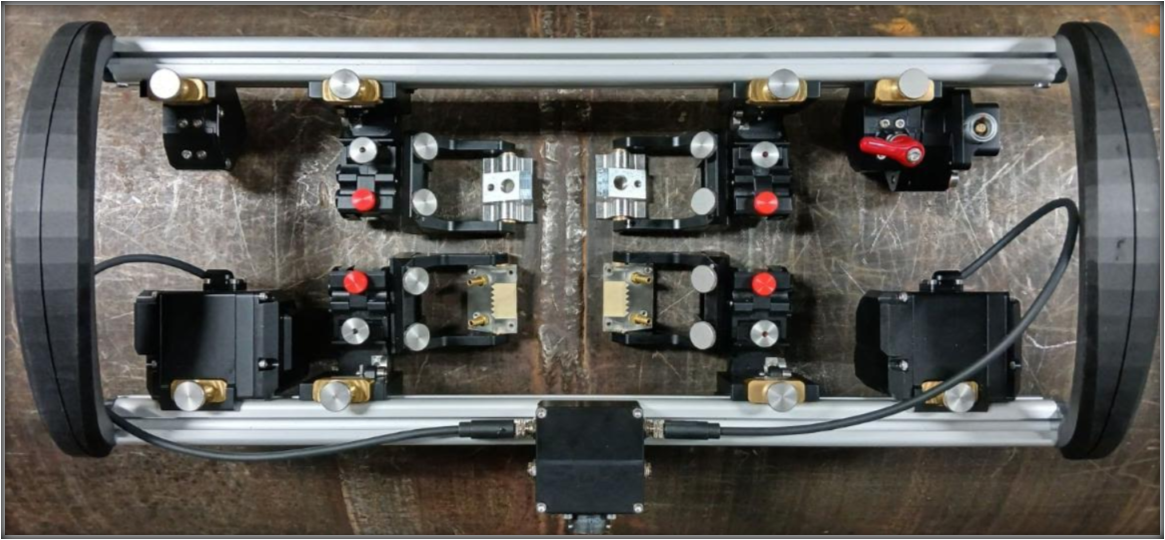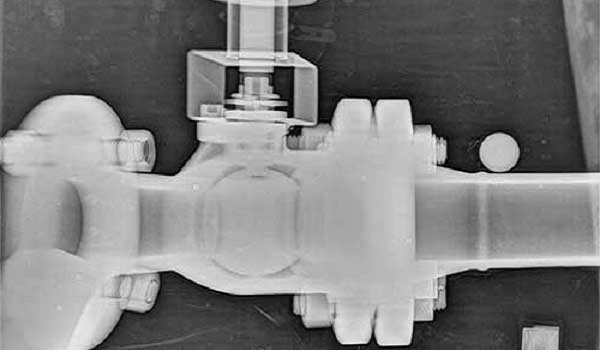Table of Contents
What is Non-Destructive Testing (NDT)?
Non-Destructive Testing (NDT) encompasses a range of techniques used to evaluate the properties of materials, components, or systems without inflicting damage. The primary goal of NDT is to detect any potential defects or weaknesses that could lead to failure, ensuring that the material’s integrity remains intact. This method is crucial for industries where safety, reliability, and longevity are of utmost importance.
Unlike Destructive Testing (DT), where the material is intentionally damaged or destroyed to understand its properties, NDT provides a means of continuous monitoring and assessment throughout the lifecycle of a material. This approach is especially invaluable in industries such as aerospace, where the early detection of flaws in aircraft components can prevent catastrophic failures, and in power generation, where regular inspections of turbines and reactors are critical for operational safety.
NDT’s applications are broad and varied, making it a critical tool across multiple sectors. For example, in the oil and gas industry, NDT is used to inspect pipelines and pressure vessels, ensuring the integrity of these critical infrastructures. In the automotive industry, NDT helps in the quality control of engine components, ensuring that they meet the stringent safety standards required for vehicles. The ability to identify issues early on not only enhances safety but also ensures the continued functionality of critical infrastructure, from bridges and railways to offshore platforms and military vehicles.
Why is NDT Important?
The importance of Non-Destructive Testing (NDT) cannot be overstated. Its ability to detect potential issues before they escalate into failures makes it an essential practice across various industries. Here’s why NDT is crucial:
Safety:
NDT plays a vital role in safeguarding both personnel and equipment by identifying potential failures before they occur. For instance, the U.S. Chemical Safety and Hazard Investigation Board reported that a significant percentage of industrial accidents could have been prevented with timely inspections using NDT techniques. By detecting cracks, corrosion, or other defects early, NDT prevents accidents, ensuring the safe operation of industrial systems.
Cost-Effectiveness:
By preserving the integrity of the test material, NDT offers significant cost savings. Early detection of defects can prevent costly repairs, production delays, or even catastrophic failures. According to a study by Frost & Sullivan, implementing regular NDT protocols can reduce maintenance costs by up to 30% while extending the life of critical infrastructure by 20%. This proactive approach helps industries avoid the expenses associated with unplanned downtime or material waste.
Efficiency:
NDT methods are designed for speed and accuracy, enabling the quick identification of flaws without disrupting operations. For example, ultrasonic testing can inspect pipelines at a rate of several meters per minute, ensuring that even extensive networks can be checked thoroughly and efficiently. This efficiency minimizes downtime and keeps operations running smoothly, which is particularly crucial in industries like oil and gas where even short outages can lead to significant financial losses.
Compliance:
Many industries are governed by strict regulations that mandate regular inspections to ensure safety and reliability. For example, the American Society of Mechanical Engineers (ASME) and the International Organization for Standardization.
What are the Different Types of Scanning in NDT?
There are several NDT techniques, each tailored to specific materials and types of defects. Here’s an overview of the main methods:
 Eddy Current Testing (ET):
Eddy Current Testing (ET):
Eddy Current Testing uses electromagnetic induction to detect flaws in conductive materials. This method is particularly effective in the aerospace industry for inspecting aircraft fuselage and engine components. For example, during routine maintenance of aircraft, ET is used to detect fatigue cracks in landing gear components, ensuring that any potential failures are identified and addressed before they can lead to catastrophic outcomes. In the automotive industry, ET is commonly employed to inspect engine blocks and cylinder heads for cracks and other defects that could compromise performance.
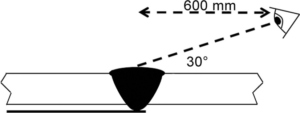 Visual Testing (VT):
Visual Testing (VT):
Visual Testing is the most basic form of NDT, involving direct visual inspection, often enhanced by tools like magnifiers and borescopes. This method is widely used across all industries due to its simplicity and effectiveness. In the construction industry, VT is used to inspect welds on structural steel, ensuring that they meet safety standards before being approved for use. In the manufacturing sector, VT is employed to check the surface finish of components, identifying any defects that could affect their performance or aesthetics.
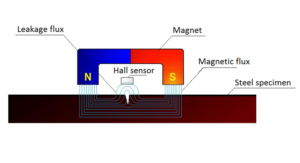 Magnetic Particle Testing (MT):
Magnetic Particle Testing (MT):
Magnetic Particle Testing involves applying a magnetic field to ferromagnetic materials and detecting surface and near-surface defects through the distribution of magnetic particles. This method is extensively used in the automotive and oil and gas industries. For example, MT is applied to inspect oil pipelines for stress corrosion cracks, ensuring that the pipeline’s integrity is maintained and preventing potential leaks or ruptures. In the automotive industry, MT is used to inspect critical safety components like axles and suspension parts, where even minor defects could lead to significant safety risks.
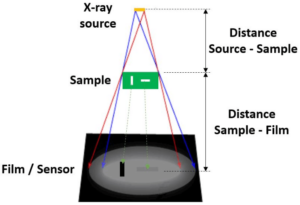 Radiographic Testing (RT):
Radiographic Testing (RT):
Radiographic Testing uses X-rays or gamma rays to view the internal structure of a material, making it ideal for inspecting welds and castings. In the aerospace industry, RT is used to inspect turbine blades for internal defects that are not visible on the surface, such as voids or inclusions, which could lead to catastrophic engine failure if undetected. In the construction industry, RT is commonly used to inspect the welds in steel bridges and high-rise buildings, ensuring that the structures are sound and safe for use.
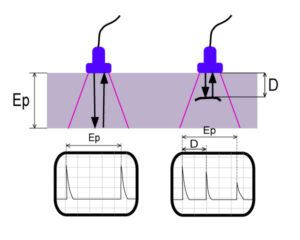
Ultrasonic Testing (UT):
Ultrasonic Testing employs high-frequency sound waves to detect internal flaws, measure thickness, and assess material properties. This method is extensively used in the oil and gas industry to inspect pipelines and storage tanks for corrosion and erosion, which can lead to leaks or catastrophic failures if not addressed. In the aerospace industry, UT is used to inspect composite materials in aircraft for delaminations or other internal defects that could compromise the aircraft’s structural integrity.
 Liquid Dye or Penetrant Testing (PT):
Liquid Dye or Penetrant Testing (PT):
Liquid Penetrant Testing involves applying a liquid dye to the surface of a material to reveal surface-breaking defects. This method is widely used in the automotive, aerospace, and metal fabrication industries. For instance, in the aerospace sector, PT is employed to inspect turbine blades and other critical components for surface cracks that could lead to failure. In metal fabrication, PT is used to inspect welds and castings, ensuring that they are free from defects that could compromise their strength and durability.
Types of NDT Equipment: Enhancing Inspection Efficiency
Non-Destructive Testing (NDT) equipment is essential for improving the efficiency, accuracy, and reliability of inspections across various industries. By incorporating advanced technology, modern NDT equipment not only enhances data collection and analysis but also ensures that potential flaws and defects are detected early, preventing costly failures and ensuring safety.
The Benefits of Automation and Technology in NDT
Advanced NDT equipment offers numerous benefits, particularly when it comes to automation and the integration of cutting-edge technology:
- Increased Efficiency: Automated NDT systems can perform inspections faster and more consistently than manual methods, significantly reducing inspection times and minimizing downtime.
- Enhanced Accuracy: Technology-driven NDT tools, such as digital sensors and AI-powered analysis, provide more precise and repeatable results, reducing the likelihood of human error.
- Improved Data Management: Modern NDT equipment often includes digital data storage and analysis capabilities, allowing for easier tracking, comparison, and reporting of inspection results over time.
- Access to Hard-to-Reach Areas: Innovations such as drones and robotic inspection systems enable NDT professionals to safely and efficiently inspect areas that would be difficult or dangerous to access manually.
Key Types of NDT Equipment Used in Modern Inspections
Non-Destructive Testing (NDT) equipment is essential for improving the efficiency, accuracy, and reliability of inspections across various industries. By incorporating advanced technology, modern NDT equipment not only enhances data collection and analysis but also ensures that potential flaws and defects are detected early, preventing costly failures and ensuring safety.
Top Five NDT Methods
Applications and Advantages
Thickness Gauges
- Purpose: Essential for measuring material thickness, such as coatings or the wall thickness of pipes. These instruments ensure materials meet specifications and maintain structural integrity.
- Advantage: When automated, thickness gauges can provide continuous monitoring of critical infrastructure, allowing for real-time alerts if any material deviates from its specified thickness.
Flaw Detectors
- Purpose: Identify and analyze defects in materials, such as cracks, voids, or inclusions. Crucial for assessing the quality and safety of components.
- Advantage: Advanced flaw detectors use digital imaging and AI to detect and classify defects more accurately, even in complex materials, reducing false positives and ensuring that only genuine issues are flagged.
Material Condition Testers
- Purpose: Assess the overall condition of materials by measuring properties like hardness, conductivity, or corrosion levels.
- Advantage: Automated condition testers can continuously monitor material health in real-time, providing predictive maintenance data that helps prevent unexpected failures.
Eddy Current Testers
- Purpose: Utilize electromagnetic induction to detect defects such as cracks, corrosion, or changes in material thickness, particularly in conductive materials.
- Advantage: Eddy current testers can be integrated into automated systems for high-speed, non-contact inspection of components on production lines, improving throughput without sacrificing accuracy.
Radiography (X-ray) Equipment
- Purpose: Examine the internal structure of objects using radiation to capture detailed images, detecting internal defects that are not visible on the surface.
- Advantage: Digital radiography offers faster image processing and higher resolution, enabling more detailed inspections and easier archiving of inspection records.
Ultrasonic Testing (UT) Instruments
- Purpose: Transmit high-frequency sound waves into materials to detect internal flaws and measure properties like thickness.
- Advantage: Automated UT systems can inspect large areas quickly, and advanced UT instruments with phased array technology provide detailed, 3D imaging of subsurface defects.
Magnetic Particle Inspection (MPI) Equipment
- Purpose: Detect surface and near-surface flaws in ferromagnetic materials by applying magnetic fields and magnetic particles.
- Advantage: MPI systems with automated particle application and detection increase inspection speed and ensure consistent coverage, particularly in complex geometries.
Liquid Penetrant Testing (LPT) Kits
- Purpose: Used to detect surface defects by applying a liquid penetrant that seeps into cracks and flaws, made visible under UV light after applying a developer.
- Advantage: Automated LPT systems can standardize the application and development process, improving defect detection rates and reducing operator variability.
Visual Inspection Tools
- Purpose: Visual inspection remains fundamental, utilizing tools like borescopes, magnifiers, and cameras to assess asset conditions.
- Advantage: The integration of drones, robots, and AI-enhanced cameras allows for thorough inspections of hard-to-reach areas, reducing the need for scaffolding or manual access, and improving overall safety.
The integration of advanced NDT equipment into inspection processes not only enhances the efficiency and accuracy of inspections but also helps industries stay ahead of potential issues. Automation and technological innovations are paving the way for more reliable, consistent, and safer NDT practices, ensuring that critical infrastructure and components remain in optimal condition.
Where is Non Destructive Testing Used?
NDT is used across a wide range of industries, each relying on it for different applications:
Power Generation: Monitoring the condition of turbines, reactors, and other critical infrastructure.
Maritime and Shipping: Assessing the structural integrity of ships, submarines, and offshore platforms to prevent catastrophic failures at sea.
Transportation: Ensuring the safety and reliability of railroads, bridges, and other critical infrastructure through regular NDT inspections.
Military and Defense: Inspecting critical equipment, vehicles, and infrastructure to ensure operational readiness and safety in demanding environments.
Manufacturing: Quality control of materials and components throughout the production process.

